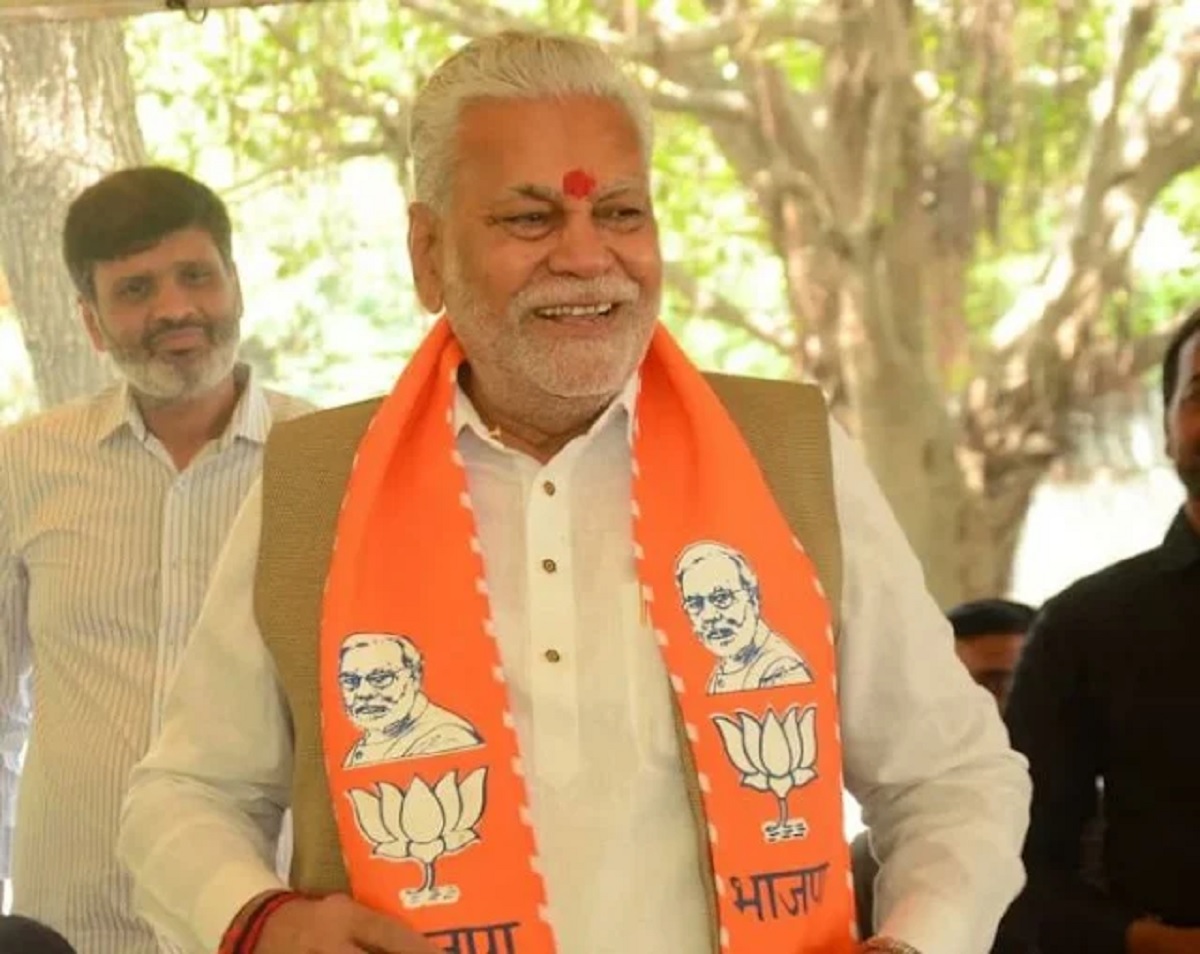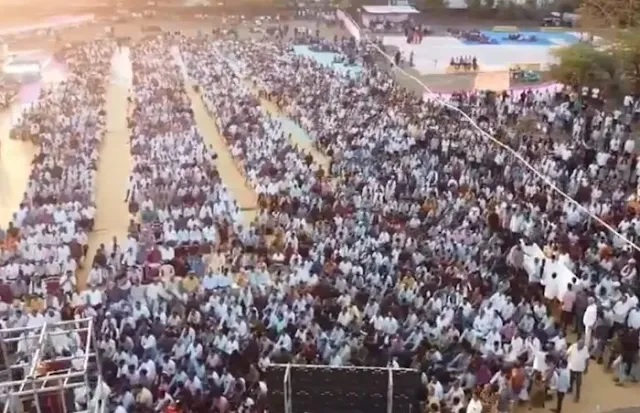Personally, I have no love lost for Purshottam Rupala, though I have known him ever since I was posted as the Times of India representative in Gandhinagar in 1997, from where I was supposed to do political reporting. In news after he made the statement that ‘maharajas’ succumbed to foreign rulers, including the British, and even married off their daughters them, there have been large Rajput rallies against him for “insulting” the community.
A candidate chosen to fight the Lok Sabha polls from the Rajkot constituency, currently a Union minister who was elected in the Rajya Sabha five years back, I kept in touch with this top Saurashtra Patel BJP leader in order to do stories on the political situation in Gujarat.
Around the time I reached Gandhinagar, Shankarsinh Vaghela’s Rashtriya Janata Dal (RJD) had lost majority, as the Congress withdrew its support, and elections were announced. Keshubhai Patel, then Gujarat BJP supremo, led the party to a resounding victory.
On becoming chief minister in early 1998, Keshubhai refused to retake Rupala in his Cabinet. I don’t know what was the reason, but I suspect, Keshubhai considered him a close associate of his bete noire Narendra Modi. There could be another reason: You scratch the skin any of these leaders, and one would find caste ingrained deep into them. Keshubhai was a Leuva Patel, and Rupala a Kadva Patel. Sugar-coated with Hindutva talk, annihilation of caste hadn’t perhaps touched them.
Rupala had earlier served under Keshubhai’s short-lived ministry in 1995-96. A disgruntled Rupala was made Gujarat Industrial Development Corporation (GIDC) chairperson, a non-executive post, about which he would always complain to me, saying he had no powers.
I would often meet Rupala along with two of his close friends, also sidelined, Bhuprendrasinh Chudasma and Arvind Patel, all three of whom would brief me, of course off the record, about the type rebellion that was brewing against Keshubhai within the party.
Of the three, Rupala was most amenable, straightforward and frank, especially during our one-to-one interaction, both during our meetings at his official residence in Sector 19, and later at his personal residence in Sector 3 in Gandhinagar after he was defeated by Congress’ young and fiery Paresh Dhanani in the December 2002 assembly polls, which also reconfirmed Modi as chief minister.
Rupala would tell me how Keshubhai was losing support in the party, and why the party high command was keen for a replacement. After Modi came to power in October 2001, he was appointed as water resources minister, where he lasted till his defeat in the assembly polls in December 2002.
After Modi assumed power in October 2001, one of the persons whom I promptly met was Rupala. I asked him what did he think of Modi, and he told me, speaking in English instead of Gujarati, a rarity, “He is hardly working, you know, hardly working…” I smiled. What he meant was, Modi would work very hard for Gujarat’s development.
As Modi’s minister in 2001-2002, I would meet him in his ministerial chamberr. Never keen on briefing about what was being done under him as water resources minister, he would generally talk politics. He would explain at length how elections are not fought on the basis of ballot box, telling me the type of strong arm tactics required to win.
At one point, I asked him what he had to say about the infamous April 7, 2002 incident in which Narmada Bachao Andolan leader Medha Patkar was assaulted in Gandhi Ashram in the aftermath of the anti-Muslim riots. In his reply, laughing aloud, he uttered some extremely unprintable words, even as supporting the action against her. On that day, I lost whatever respect I had for him, yet, for reporting purpose, I kept meeting him till 2012, when I retired from the Times of India.
Now coming to the so-called Rajput rebellion against Rupala. That Patels, which climbed up the social ladder after Independence following land distribution, and Rajputs, Gujarat’s former rulers, had strong contradictions is a well known fact.
Indeed, historically, as a former bureaucrat with no political axe to grind, told me, Rupala’s observation of the former Gujarat princely rulers wasn’t wrong. The rulers of small and big princely states, a whopping 327 out of a total of 584 across India, indeed had excellent relations with the British before Independence, but they took little time to change sides after India became independent, the credit of which goes to Sardar Patel. The region from where Rupala comes, Saurashtra, alone had 222 princely states!
While there is little reason to think that there were no conjugal relations of members of the Princely families with the British, I don’t have facts about it. Yet, it seems that this statement has hard the Rajputs the most.
While Rupala may have apologised for what he had said umpteen number of times after he invited the ire of the princely descendants, all belonging to the Rajput clan, the demand to remove him as party candidature continues. Apparently, the BJP high command is no reason to oblige, and there are valid reasons for this.
First of all, Rupala said what he wanted to say in front of a Dalit (mainly Valmiki) gathering, who he said were exploited by the former Princely rulers – a fact none can deny. Surely, he had vote-bank politics in mind, but that is true of all leaders seeking to garner votes at the time of elections.
The contradiction between Dalits and Rajputs continues to this day in Gujarat, and it goes well with Patel-Rajput contradiction, whether it is Saurashtra or rest of Gujarat. The Rajput oppression of Dalits is a household story among Dalit households.
Secondly, and this is more important, efforts are being made to interpret the Rajput opposition to Rupala as Kshatriya versus Rupala. This is simply not true. The term Kshatriya in Gujarat was coined by former Gujarat chief minister Madhavsinh Solanki for his political ends.
In Solanki’s scheme of things, which won Congress huge political dividends in 1980s, though resulting in a strong right-wing backlash, not just Rajputs (descendants of Princely rulers), but also several other backward class (OBC) communities formed the amorphous Kshatriya social group.
Madhavsinh, himself a Thakore OBC, included in Kshatriyas the two major communities which consisted most of the foot soldiers of the princely and British forces – Thakores and Kolis – which form a whopping one third of the Gujarat (including Saurashtra) population. Madhavsinh came up with the now defunct KHAM theory, in order to unite Kshatriyas, Harijans, Adivasis and Muslims for electoral gain, which had huge, though temporary, impact on Gujarat politics in 1980s.
Talking over to some of my friends who are keeping a close eye on the developments in Saurashtra around Rupala, it became clear that the Rajputs, forming less than 5% of the population, haven’t cared to bring under their wing the two numerically strong OBCs identified as Kshatriyas by Madhavsinh, Kolis and Thakores. As for Dalits, around 10% in Rajkot, they surely wouldn’t be with the Rajputs in their opposition to Rupala in any case.
There is a catch, however. Rupala belongs to the Kadva Patel community, and is said to have little support of the other Patel community in Saurashtra region, including Rajkot, the Leuva Patels. This is one reason why the Congress is thinking of fielding not-so-young-anymore Paresh Dhanani, a Leuva Patel leader from Saurashtra, against Rupala.
If the Congress decides to do it, the caste battle will surely be interesting to watch, as Leuvas are both numerically and socially stronger. For the record: former BJP chief minister Keshubhai Patel, whom Rupala detested, was also a Leuva.


